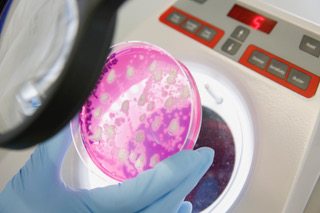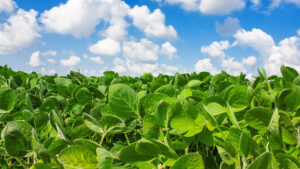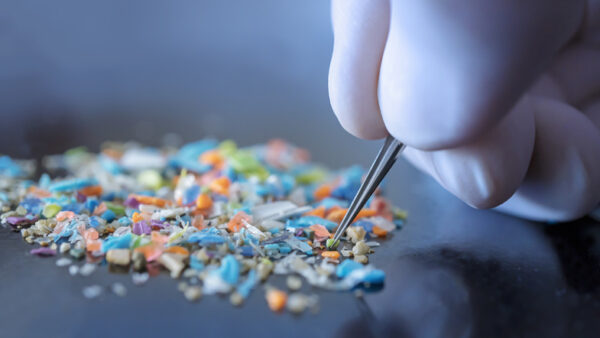Experts weigh in on biological seed-applied solutions and the role they play in helping growers make money.
Seed World: What are biologicals designed to do? How do they work?

Mark Howieson: Biologicals are naturally occurring organisms, plant extracts or organic substances that complement the seed’s genetics and traits, as well as conventional chemical seed treatments, to enhance plant vigor and establishment. Biologicals benefit plant growth in many ways, including increased nutrient availability, production of plant-growth promoting substances, as well as disease and pest control.
Amit Vasavada: Their use is growing rapidly worldwide, and they are in demand for their value in IPM programs to enhance yields and quality along with their low impact on the environment. They offer additional benefits, such as complex and novel modes of action for resistance management to extend the product life of conventional pesticides. They also add flexibility in a traditional farming operation with reduced pre-harvest intervals to manage residues for exported produce, and shorter field re-entry times for workers, which reduces labor costs.
Biopesticides are especially suited for use in:
· Rotation with chemicals in traditional programs to manage for pesticide resistance.
· Certified organic production systems.
· Grower programs where pesticide residue management is important for harvest management and/or export markets.
· Crops with intensive labor demands to gain maximum flexibility in managing work crews.
SW: What are the different types of biologicals?
MH: The BASF portfolio includes: biocontrols and pheromones for IPM insect control systems; biostimulants and inoculants for foliar, in-furrow and seed applications, as well as for agricultural, specialty and non-crop applications (e.g., turf and ornamental markets).

AV: Both biostimulants and biopesticides can be used as preplant, foliar, in-furrow and seed treatments in all cropping systems (horticulture, vine, row crops, vegetables, tree fruits and nuts as well as turf and ornamentals) to manage and control plant pathogens, insect and nematode pests. They can be used either alone or as part of IPM programs because of they offer unique modes of action and have low impact on the environment and human health.
SW: What do we know about how biologicals can complement traits?
MH: Simply put, biologicals are part of a holistic approach to maximizing yield potential. Biologicals help crops maximize their genetic potential, which maximizes the grower’s return on investment and ultimately increases yield potential for the grower.
AV: Biologicals, when used as seed treatment, can help with improved germination rates, plant stand and vegetative vigor. Upon successful establishment of plants with traits, biologicals with different modes of action on pests may offer additional benefits in pest control.
SW: Can we expect changes in the plant? If so what?
MH: The biological products can manifest or initiate changes that help the plant’s growth. Good examples are rhizobia and bacillus, which are bacteria-based biological products that are frequently used by farmers today.
Rhizobia, in inoculants like Vault, form nodules in partnership with legumes, such as soybeans, where the bacteria convert nitrogen from the air into a form that can be used by the plant as a nitrogen fertilizer. In exchange, the plant trades sugars that the bacteria use as an energy source.
Another example is bacillus, like our new Velondis Flex, that we are expecting EPA approval of soon. The bacteria in Velondis Flex starts a mechanism known as Induced Systemic Resistance (ISR) in plants. Think of ISR like a flu shot in individuals that helps prevent us from getting ill. Activation of ISR allows the plant to protect itself, making it less likely for disease organisms to invade it.
AV: Many biologicals arising from natural microbes with their active secondary metabolites have shown mobility of molecules through the plants after foliar or soil applications. These metabolites have been shown to elicit immune responses in plants and alter plant metabolism for protection against fungal pathogens. Other microbes have shown to induce distinct metabolic changes in a synergistic fashion to increase critical metabolic functions in plants leading to better fruit quality.
SW: When should they be used/not used? When is it most effective/not effective?
MH: Biologicals complement the plant’s genetics and traits, as well as chemical seed treatment, maximizing the grower’s return on investment. Not meant to replace conventional seed treatments, biologicals are most effective when they complement them.
We see biologicals growing to be an important factor in coming years. It is less about one or the other, but how the different modes of action from chemistry and biologicals work within integrated programs for growers to address their challenging and ever-evolving needs.
AV: Effective use varies with the type of applied biological and the targeted pest. Biologicals can be applied from the seed treatment stage to the fruit/crop protection stage. They can be applied singly or in combination with conventional products as an Integrated Pest Management strategy. Many biologicals can be applied up until harvest due to low risk to farm workers and minimal, if any, residue limits on biologicals. Such applications are highly desirable for both worker safety and to consumers. Many biologicals, due to their inherently lower relative activity to that of highly potent synthetic chemicals, may find lower efficacy in high pest pressure situations. Like conventional pesticides, they should be applied when diseases and pests first appear.
SW: What do we not know that we’d like to?
MH: We know the potential biologicals can add to farmer’s outcomes, so at BASF we are continuously searching for new and novel technologies that can complement traditional agricultural practices.
There are many organisms in nature that have not been well characterized yet. We are constantly looking for new organisms that can be used in the development of biological seed treatments.
AV: Biologicals, both biopesticides and biostimulants, exert their effect via multiple modes of action. Complex metabolic pathways giving rise to highly active ingredients that exert their activity on pests are highly valuable to decipher via genomic and metabolomics tools. Biostimulants, when applied as soil inoculants singly or as consortia, present another set of challenges with respect to their interactions with plants and soil microbiome. There is a lot we still need to learn about the fate of biological pesticides and biostimulants in the soil.
SW: What do you expect to see in future years as we learn more?
MH: The world’s population will reach 10 billion in the next 40 years. By then, agricultural production will have to double.
While biologicals are a niche application now, they are becoming increasingly valuable in integrated pest management (IPM) programs, giving growers broader protection, an extended application window and better management of resistance and residues.
Seed-applied inoculants are in greatest use in North and South America, and growing in Europe. Biocontrol use is growing in all three regions. Adoption of all types of biological solutions in Asia is ongoing, with those countries that are further along in modern agriculture having more advanced usage.
Ultimately, we hope to see biologicals become more important in agricultural row crops across the globe. Focusing on the performance at the grower level will help us achieve that.
AV: A major challenge for biologicals is their applications in high density and high-volume agriculture due to competition by highly active and low-cost chemical products. Biologicals will need to compete with these products via improved potency, application rates and higher yields. With this, the challenge of producing such products in large volumes in a timely and cost-competitive manner will need to be met. And finally, novel, stable formulations will need to be developed to effectively manage pests in an IPM program.
SW: Final thoughts?
MH: It has been exciting to see the activity in the biologicals space increase over the last few years. Within the university and research communities, lots of resources are being put behind R&D in biologicals. Both aspects together are going to drive innovation and shape the future for new biological products.
AV: In order for growers, applicators and pest control advisors to recognize the full potential of biopesticides, education is critical to ensure their proper use. Users must work closely with manufacturers’ representatives and/or the product’s dealer/distributor to determine the proper application timing and frequency; the most effective application methods to ensure complete crop coverage; target pest identification; and pest/disease pressure and life cycle dynamics.
Because the mode of action of a biopesticide is different from that of a conventional pesticide, the way to determine the product’s effectiveness is also different. The best way to measure the effectiveness of a biopesticide product is not only through field performance trials that measure number of pests or amount of leaf spots, but through marketable yield and quality of the edible or final product.
Marketable yield should be one of the most important measures of performance of a product used on fruit, vegetable and nut crops. However, the level of pest or disease control is usually the standard of the measure for determining product effectiveness that is used in performance trials. In a standard performance trial in which a stand-
alone biopesticide product is compared strictly to a conventional chemical to determine disease/pest control effectiveness, the chemically treated plot may show fewer pests or leaf spots per plot than the plot treated with a biopesticide product.
While the biopesticide trial plots may have higher incidences of diseases or pests than conventionally treated plots, the use of biopesticides often increases marketable yield by working synergistically with chemical pesticides to enhance control, by permitting timely re-entry intervals and by the ability to be used close to harvest. Therefore, it is important to test and evaluate biopesticides based on trials that are true reflections of grower practices and programs. It is critical to incorporate biopesticides into trials and programs in which biopesticides, like conventional pesticides, are tank mixed and rotated.













